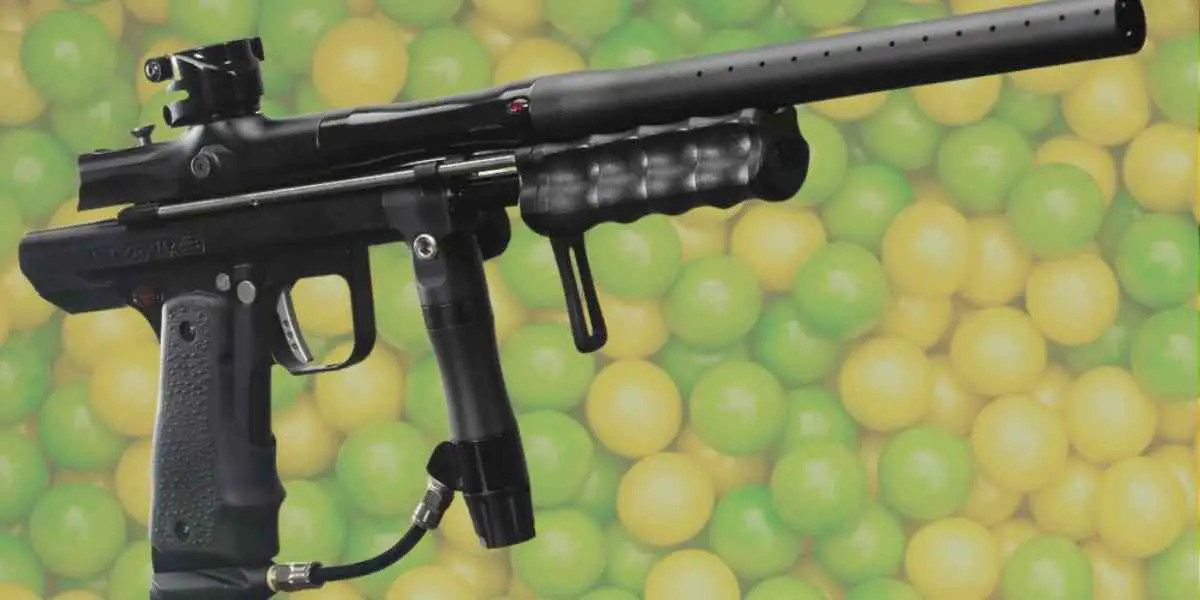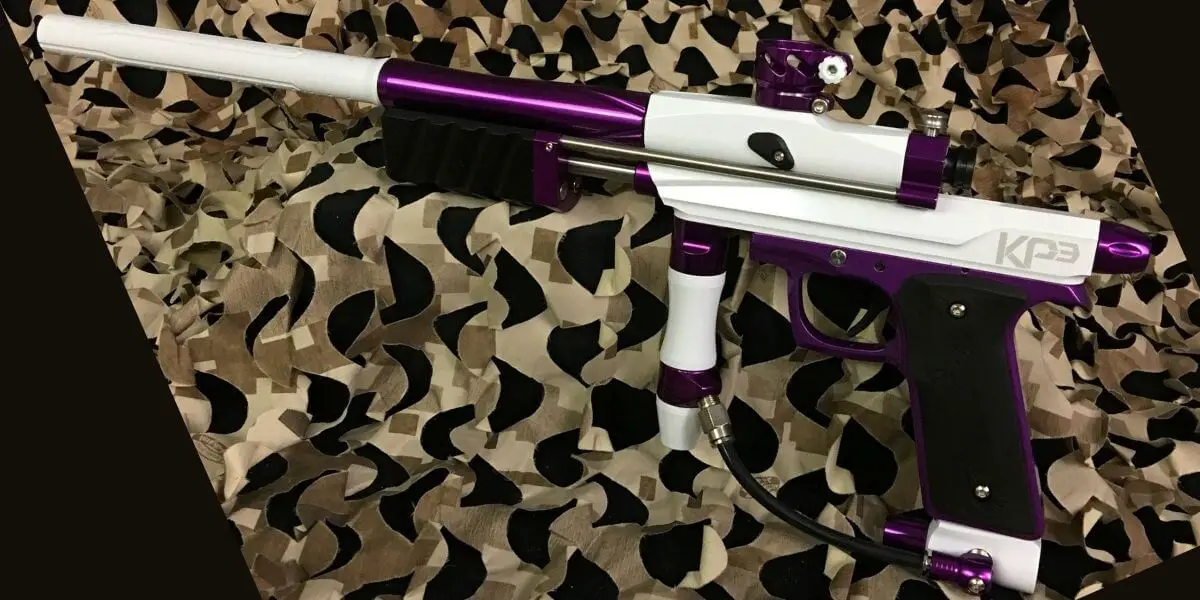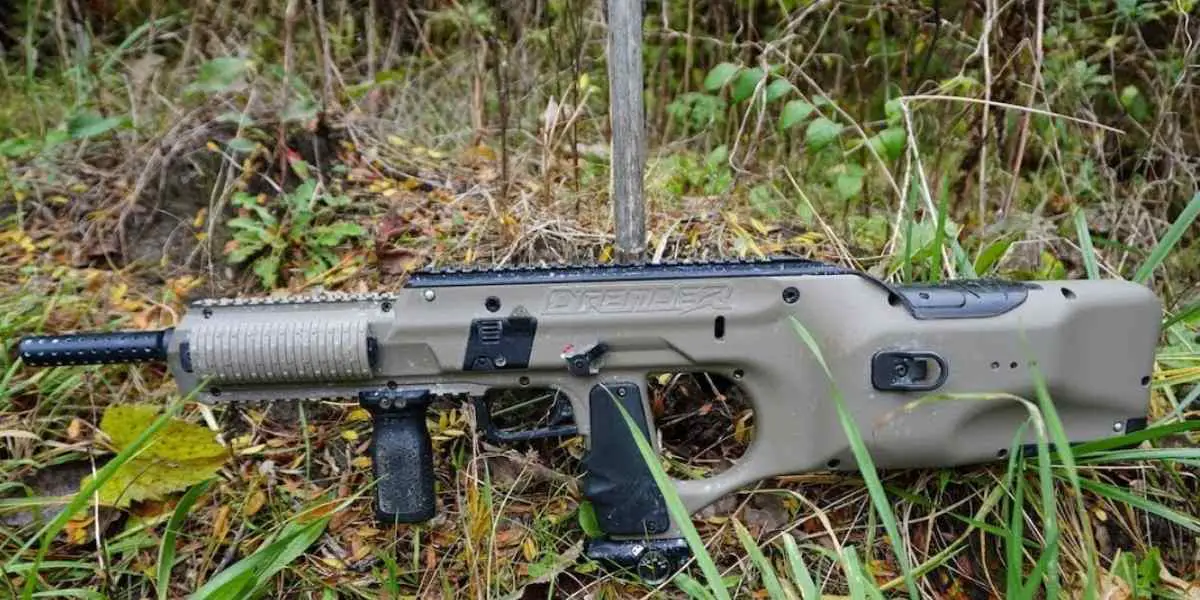
It is well known that paintball projectiles are made using biodegradable, non-toxic, and food-grade ingredients. This makes paintball one of the few sports that are completely environmentally friendly and causing the least amount of harm to the planet. Some paintballs are even made to be edible, in case it flies right into your mouth. This raises an important question: are all paintballs biodegradable?
All paintballs are biodegradable, although there are minor variations in the make and model depending on the manufacturer. For the most part, even the ‘paint’ used in paintball is non-toxic and eco-friendly. The paintball shell itself is made using a gelatin capsule, making it as harmless as gummy bears!
To dive into the specifics of what makes paintball pellets so environmentally friendly, we have to first learn how paintballs are made.
The first layer of paintballs is made of a thick shell, usually comprising of water and gelatin fused in a mixing vessel. This mixture is carefully heated and fed into a processor that spreads it out evenly and compresses it into half shell molds, which are later sculpted into full-shell molds. These shells are later pressed to create a strong vacuum. This vacuum is then injected with a filling.
The ingredients used for the shell can play an important role in the game depending on the climate and temperature of the field. For instance, more robust and thicker shells are made to properly shoot through brush and leaves. Some fields have paintballs specifically designed for winters to shoot reliably in colder temperatures. Once the shell is properly formed, it is then dried, inspected, sorted and packaged.
The gelatin for the shell is made using denatured collagen fibers which are derived from the skin, connective tissues, and bones of dead animals. Most manufacturers prefer using pig skins to manufacture paintball shells because they tend to make the best surface: neither too hard nor too soft.
To increase the stability of the paintball shells and make the gelatin more moldable, the ratio of gelatin to plasticizer is adjusted in such a way that it establishes an optimal balance between brittleness and elasticity, allowing paintball projectiles to collapse on impact, yet retain their structural integrity when fired.
The ratio is adjusted to increase or decrease the level of the brittleness of the shells, and this largely depends on the game’s format. Usually, more brittle formats are preferred when playing in woodsball, which can be important if you want a more durable shell to shoot past leaves and bushes but reliably splatter on your target. More gentle capsules with lower brittleness are used in speedball formats, where players are usually more exposed.
This filling is the ‘paint’ that smears your clothing (or skin) when it comes crashing at sufficiently high speeds. The filling comprises polyethylene glycol and a bright, recognizable food-coloring dye mixture that is easy to spot from a distance. The process by which paints are manufactured within the gelatin shell is known as encapsulation.
This leaves only one worry with paintballs: that they can and will stain certain fabrics. You can minimize this by purchasing paintball cases from certain brands that don’t stain light-colored fabrics. Paintballs with cheaper paints may be more likely to stain poly fabrics or white cotton. But this is not nearly as concerning as the fear of your paintball projectiles lingering on in the environment for hundreds of years after they’ve been fired.
When paintball projectiles were first created, they usually stained and ruined the participants’ clothing, much to the chagrin of everyone involved. The inconvenience of having to buy new clothes was usually enough to discourage people from coming to more games, which caused a notable decrease in revenue. To counter this problem, paintball manufacturers decided to make water-soluble projectiles.
As you can imagine, the decision to change to non-toxic, non-staining, biodegradable paintballs had more to do with ease of use and disposal than the environment!
But this was not easy because you can’t just fill up paintball shells with water since they will eat into the gelatin shell. The idea instead was to rely on water-soluble compounds, and after much deliberation, a solution was finally found: polyethylene glycol (PEG). This colorless, tasteless, and almost odorless solution easily dissolves in water but does not affect the gelatin shell. Moreover, PEG flows very slowly since it is tremendously vacuous. Its syrup-like consistency (almost like blood when exposed to air) makes it perfect for use with paintballs.
The answer lies in basic chemistry: hydrogen bonding and polarity. Liquid water has distinct positive and negative charges, hence, the relatively high degree of polarity. These charges occur because of the differences in electronegativity between hydrogen and oxygen. This permanent charge attracts other polar molecules like PEG.
The polar nature of PEG enables water-soluble dyes to be dissolved into paintball projectiles without compromising its structural integrity. The exact structure of paintballs is a closely guarded secret, but for all intents and purposes, players should be relieved to learn that they can easily wash their paint-splattered clothes into the machine washer (although it may require a few more washes).
Since paintballs are designed to biodegrade back into the environment, if you leave them exposed to the air (and outside elements), they will deform in less than two weeks (three weeks tops). Properly storing paintballs can allow you to increase their shell life beyond the 1-year mark, although storing them for too long can cause the dyes and gelatin to spoil leak out nasty odors.
Loading spoiled paintball projectiles into your paintball marker may cause damage to it. Moreover, the paintball splatter on the marker’s parts may be harder to clean afterward
As the term ‘biodegradable’ would suggest, most paintballs are designed to not leave an environmental cleanup issue following an area having been used for a game of paintball. In most outdoor paintball fields, it isn’t going to be possible to collect paintball shells and paint easily. If the paintball shells were made using non-biodegradable material, it would leave a large amount of plastic contaminating the area for several hundreds of years to come.
In most cases, manufacturers would have the choice of using plastic shells. The issue of plastic contamination, although not discussed as it should, can impact our lives in the future. More people are now considering the damage caused by plastic pellets. In some cases, the paintball shell stats breaking down when exposed to sunlight or moisture.
The aftermath of a game of paintball is a messy ordeal. But the mess is easy to clean since the ingredients are designed to compose once they are introduced to the elements in the field.
Since the materials used are biodegradable, manufacturers can reduce the level of greenhouse gas emissions. If you don’t decide to clean the field yourself, the environment should be able to self-cleanse itself in due time (or during rain).
This negates the need for landfills to store leftover paintball pellets due to their rapid deteriorating nature compared to other sports such as airsoft that may use non-biodegradable pellets.
Biodegradable paintball pellets have a fairly limited lifespan because they will start decomposing once you expose them to the air. Storing them for too long will cause their shape to distort, making it harder to fire using most paintball markers. This means you should use paintball pellets immediately within the first few weeks or months depending on the brand used.
Since biodegradable paintballs shatter immediately upon impact, they may be difficult to use in areas with thick leaves and forests. This makes it difficult to verify where the paintball smear came from (leading to a few early disqualifications).
Owing to their fragility, paintball pellets are not reusable once fired. This means you will have to buy a new case whenever it’s time to hit the fields – and this can be expensive.
Even though paintball pellets are biodegradable and decompose on their own over a short time, having your yard or field littered with hundreds of paintball shields and paint marks can be off-putting. It is advisable to play the game in closed environments to appropriately so you can properly dispose of them afterward.
All paintball pellets have a limited lifespan, even the ones that are safely contained in sealed bags. To check if the paintball pellets are game-worthy, inspect them for a few signs: are they still around? Are there any instances of dimples? If not, conduct a drop test to verify the structural integrity of the paintball pellets.
If the balls are breaking reasonably well upon impact with the ground, they are good to use. Paintball shells become softer with time and won’t break as easily, causing more pain and even bruises. If they have gone bad, you can use them for ‘target practice’ in the garden or just dump them in the bin.
 Empire Paintball Sniper Pump Marker Review
Empire Paintball Sniper Pump Marker Review Azodin KP3.5 KAOS Review
Azodin KP3.5 KAOS Review Tippmann Cronus Review
Tippmann Cronus Review Empire BT DFender Review
Empire BT DFender Review